
by Cody Harrison
At CH Equine, we believe developing the young horse is an art of patience, not a race toward perfection. The goal is not to produce flashy movements or quick results—but to build a strong, balanced, and mentally confident partner capable of long-term soundness and joy in their work with beauty, elegance, and class.
Too often, young horses are asked for advanced or dramatic movements before they have the strength or understanding to perform them correctly. While this may look impressive for a moment, it places unnecessary stress on a horse’s joints and mind as it learns to carry itself, causing them to break down before they can reach their full potential. True brilliance in movement comes only when the body and mind are developed in harmony.
Our work with young horses always begins with large, flowing circles and long lines. We avoid tight corners or small circles that can strain developing joints. Instead, we focus on forward rhythm—encouraging the horse to push from the hind end, stretch through the back, and find natural balance. This lays the foundation for future collection, not by force but through proper gymnastic development.
As the horse gains strength and coordination, we introduce short moments of lateral work—gentle leg-yields, shoulder-fore, and transitions that promote suppleness and understanding. These moments are not about “showing off” but about teaching the horse how to use its body efficiently and with confidence.
The process mirrors human development. Just as a child progresses from grade school to middle school, then to high school, and eventually college, so too must the horse move through each stage of learning. Skipping steps or rushing the process only creates confusion, imbalance, stiffness, and a shortened career.
When we take the time to preserve the young horse’s body and nurture its mind, the result is a functional athlete who moves with grace, strength, and pride—without ever losing the joy of movement.
At CH Equine, our mission is to develop horses that are not just beautiful to watch, but beautifully built from the inside out: strong in body, soft in mind, and confident in spirit.
Because true brilliance isn’t found in flashy moments—it’s found in the quiet strength of a horse that has been developed with care, patience, and purpose.
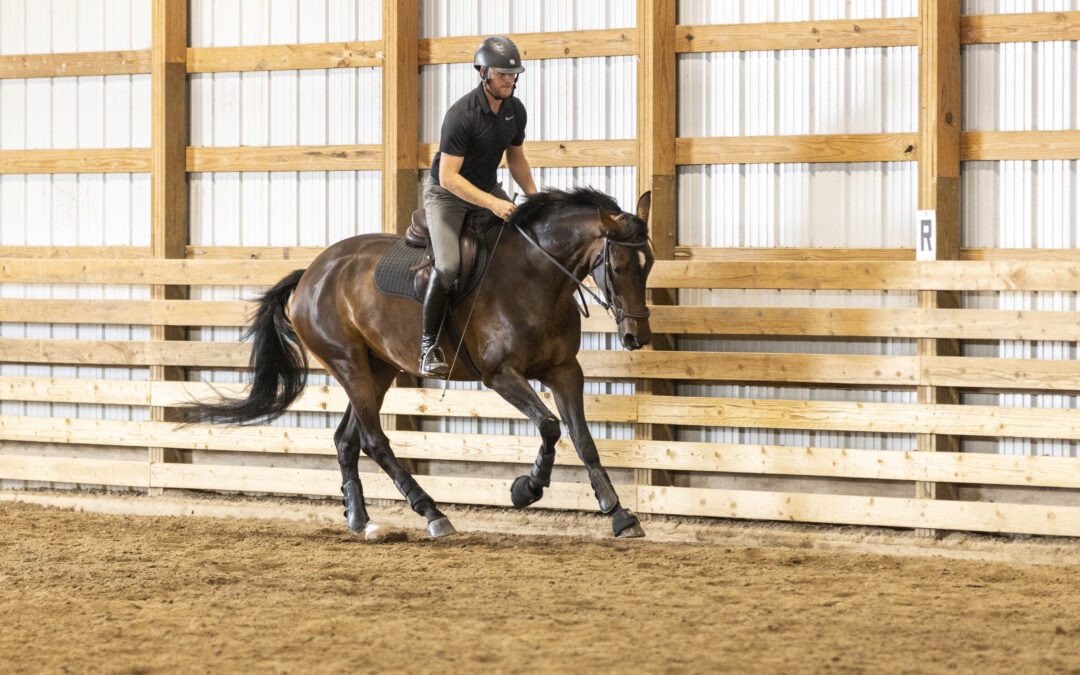
by Cody Harrison
In today’s world, everything moves fast. Information, communication, even our expectations. We live in a culture of “next day delivery” and instant gratification — where results are measured in how quickly they appear rather than how deeply they last. Unfortunately, this mindset has crept into the horse world, too.
Everywhere you look, trainers advertise guaranteed progress: 30-day wonders, “finished” horses within just a year’s time, a season to reach collection, a program promising a set number of goals in a set number of weeks or months. But horses are not machines. They are living, breathing beings with minds and bodies that develop at their own pace — and when we rush that process, the horse pays the price. If you get to a “finished” horse to soon, you will only enjoy it for a short time before the medical bills start to pile up.
At CH Equine, we don’t believe in “speed training.” We believe in functional training — thoughtful, classical work that develops the whole horse: physically, mentally, and emotionally. When horses are rushed, you may get obedience, but you lose understanding and trust. You might get movement, but not balance and suppleness. And over time, what looks like progress becomes tension, resistance, and eventually breakdown.
Our preferred age to start young horses is between four years old. This isn’t arbitrary — it’s based on anatomy, biomechanics, and decades of classical horsemanship. At this age, most horses’ skeletal structures have matured enough to carry a rider in balance without undue strain. The joints, ligaments, and growth plates have had time to develop; the mind has had time to observe, learn, and gain confidence.
By waiting, we give the horse the greatest gift we can: time to become strong before being asked to perform.
Just as every child grows and learns differently, so too does every horse. Some are physically advanced but still mentally unsure. Others are confident and willing but need more physical strength to support their natural ability. The art of training lies in recognizing where each horse is on that spectrum and meeting them there — not forcing them forward to meet a schedule.
When a young horse is allowed to develop slowly, they grow to love their work. They associate riding with clarity, comfort, and fairness — not confusion or pain. This foundation pays dividends for years to come. Horses started with patience are more sound in their body and steadier in mind. They learn to think through challenges rather than react to them. They carry their riders willingly, not defensively.
The result isn’t just a “broke” horse — it’s a functional athlete capable of a long, happy career.
This philosophy echoes through everything we do at CH Equine. Whether we’re starting young horses, retraining older ones, or guiding riders through advanced movements, our approach is the same: listen to the horse, respect their timeline, and never sacrifice quality for speed.
Because true progress isn’t about how fast you get there — it’s about how well the horse understands the journey.
At CH Equine, we train with the future in mind. Every ride builds on the last, each exercise designed to develop strength, suppleness, and understanding. We want horses that move freely, think clearly, and remain sound — not just for a few seasons, but for a lifetime.
So while the world rushes ahead, we’ll keep doing what’s right for the horse: taking our time, staying true to classical principles, and building partnerships that last.
Because real horsemanship isn’t measured in days — it’s measured in decades.
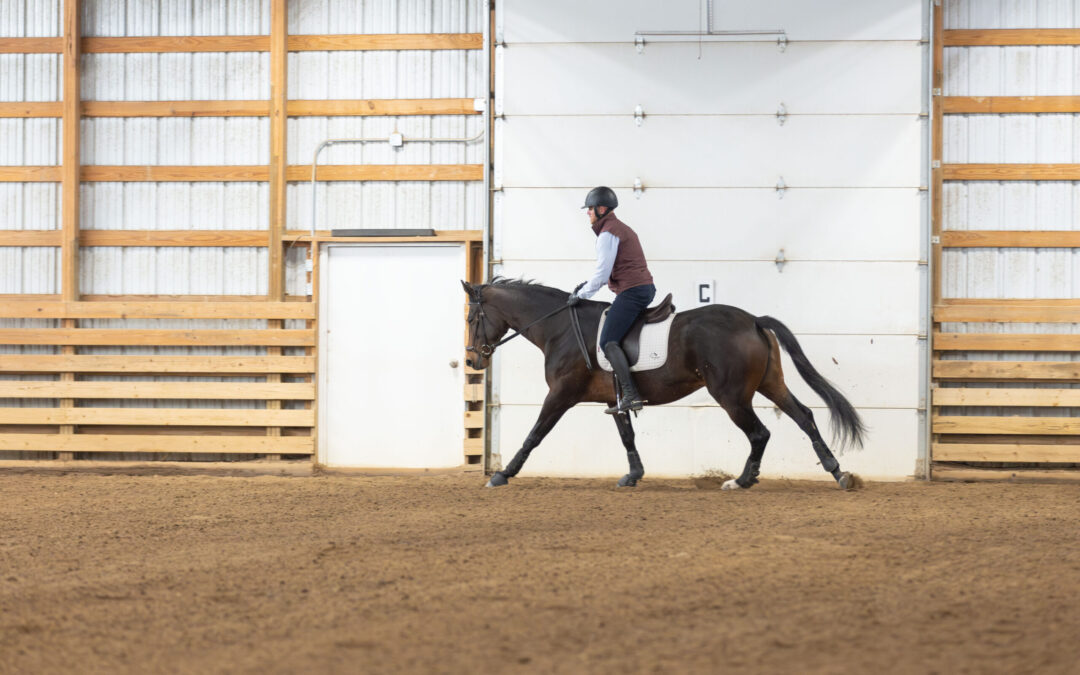
by Cody Harrison
It’s no secret that a young horse must learn to balance under the rider—but how we help them find that balance can make all the difference. The key is guiding them without overwhelming them.
First, remember that a young horse is not only learning to balance but also learning an entirely new form of communication. Expecting them to understand advanced cues too soon is like speaking to a toddler with adult vocabulary—it leads to confusion and frustration.
We must accept that communication will be limited at first and allow room for mistakes. Many riders focus too soon on achieving straightness, bend, or collection in an effort to get the horse off the forehand. But horses are naturally built to carry more weight on the forehand—80% of the time, that’s exactly where they are. The real issue arises when we trap them in small circles or repetitive exercises, especially if they’re not ready for it.
If a young horse doesn’t yet understand the aids—can’t move off the inside leg, doesn’t follow the feel of the reins, or falls in or out on turns—what’s the solution?
We start by riding forward. Horses are flight animals, built to move. Forward movement gives them a sense of freedom and helps activate the hind legs. That impulsion naturally encourages straightness and allows the horse to reach forward and down with the neck to find balance. Give them time to find their own balance. Balance, suppleness, and mental relaxation are things that can not be forced; they can only be allowed to happen.
Once this begins to develop, the horse will seek a soft, steady contact with the bit. It’s vital that the horse reaches for the contact—not that the rider takes it. Prematurely shortening the reins often causes the horse to brace, lift the head, and contract the neck, leading to sore backs, poor engagement, and loss of balance.
Only after establishing a soft contact can we begin to influence the horse’s posture and balance more meaningfully. Start with large, flowing turns. Avoid asking for collection or precision before the horse is physically and mentally ready—this process takes years, not weeks.
Take your time, but don’t waste it. From day one, ride your horse from back to front and let that be your guiding principle. When they’re ready to give more, they will offer it.
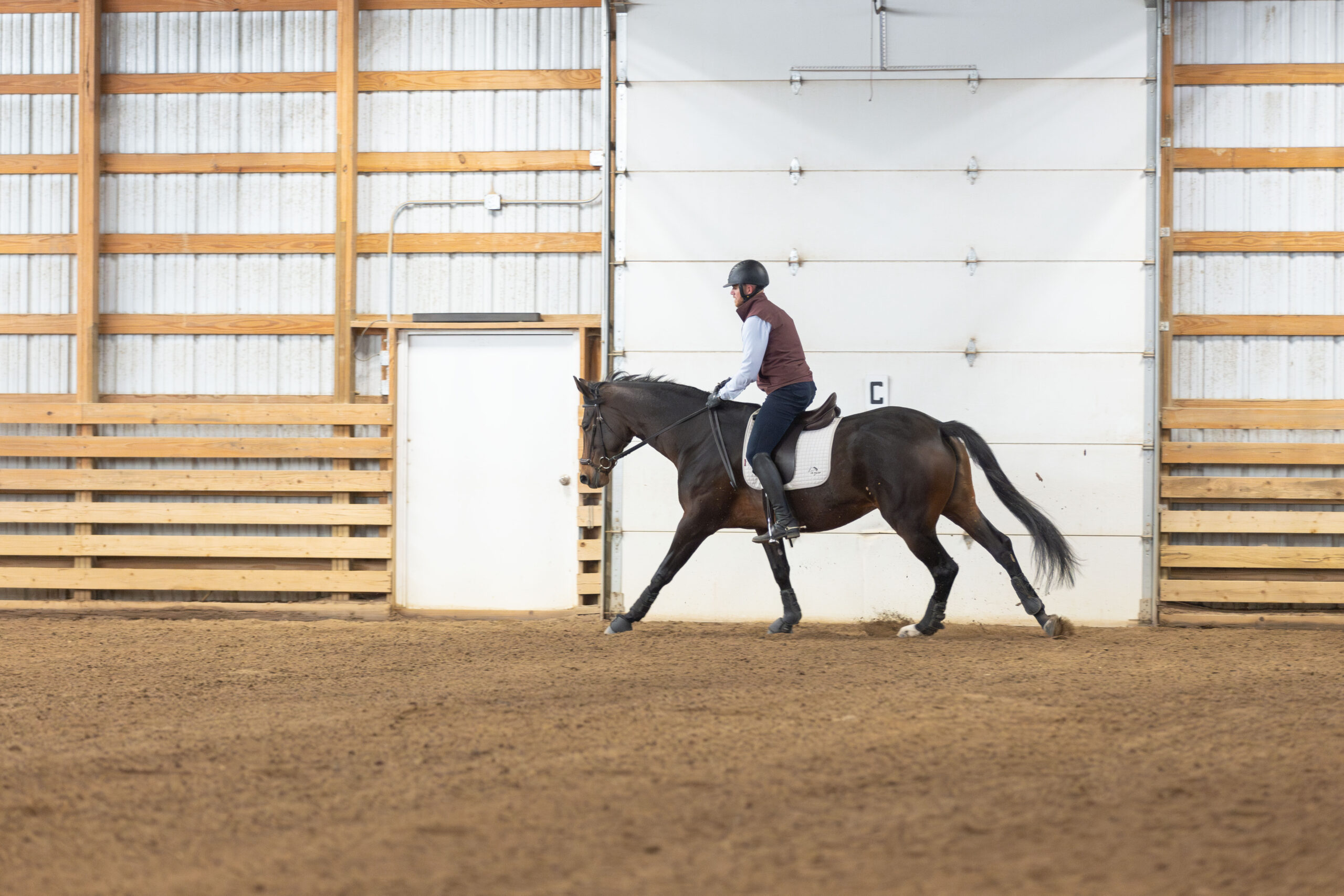

by Carrie Harrison
Part 2: The Horse’s Development – Why Maintenance Matters
Horse training isn’t a one-and-done process. Without consistent support and proper schooling, even a well-educated horse will begin to lose precision, strength, and clarity in their work. Muscles weaken, bad habits creep in, and the horse’s confidence can erode if they’re unsure of what’s being asked.
A trained horse needs ongoing education to stay at their level—and a developing horse needs even more support to get there. Horses don’t generalize well; a skill taught in one context must be reinforced in many others before it becomes reliable. And they’re always changing—physically and mentally. What worked last month may need adjusting today.
Examples of how horses can regress without guidance:
- A horse previously soft in the bridle may begin bracing if the rider’s hands become unsteady or inconsistent.
- A once-forward horse may lose motivation or develop sourness if exercises become repetitive or confusing.
- A young horse in development can become defensive or shut down if asked too much too soon, or without clear leadership.
Being in a structured program keeps the horse engaged, fit, and mentally balanced. Regular check-ins with a trainer ensure small issues are addressed before they become bigger problems. It also helps the rider better understand their horse’s needs and build a consistent communication system.
Most importantly, training is about longevity. A horse that’s physically fit and mentally confident will stay sounder and happier longer. Whether you’re working toward competition or simply want a trustworthy trail companion, proper, ongoing training is a commitment to the horse’s well-being.

by Carrie Harrison
Part 1: The Rider’s Journey – Why Continued Support is Key to Progress
Riding is a skill that evolves over time, and like any discipline, progress depends on the quality of instruction and support along the way. For the average amateur rider, independent progress without a trainer is not only difficult—it can be counterproductive. Bad habits can develop quickly and become ingrained before a rider even realizes something is going wrong.
Even accomplished riders benefit from eyes on the ground. A trainer offers perspective, technical corrections, and a roadmap for development. Without that, many riders plateau or even regress, especially when working through challenges like fear, body awareness issues, or communication breakdowns with their horse.
For example:
- A rider struggling with balance may not notice they lean slightly to one side—something a trainer can spot and correct quickly.
- Riders who have confidence issues may find themselves backing off or avoiding certain exercises, limiting their growth unless encouraged and guided.
- Miscommunication with the horse often stems from unclear aids or inconsistent timing—both of which a trainer can help refine.
Additionally, regular lessons build accountability and consistency. Riders in a program tend to ride more frequently, set goals, and stay focused. It also creates a safe space to ask questions, troubleshoot issues, and celebrate wins—big or small.
In short, a rider’s progress isn’t just about saddle time. It’s about quality time, with the right guidance. A committed trainer helps riders unlock their potential, avoid setbacks, and enjoy a more fulfilling partnership with their horse.
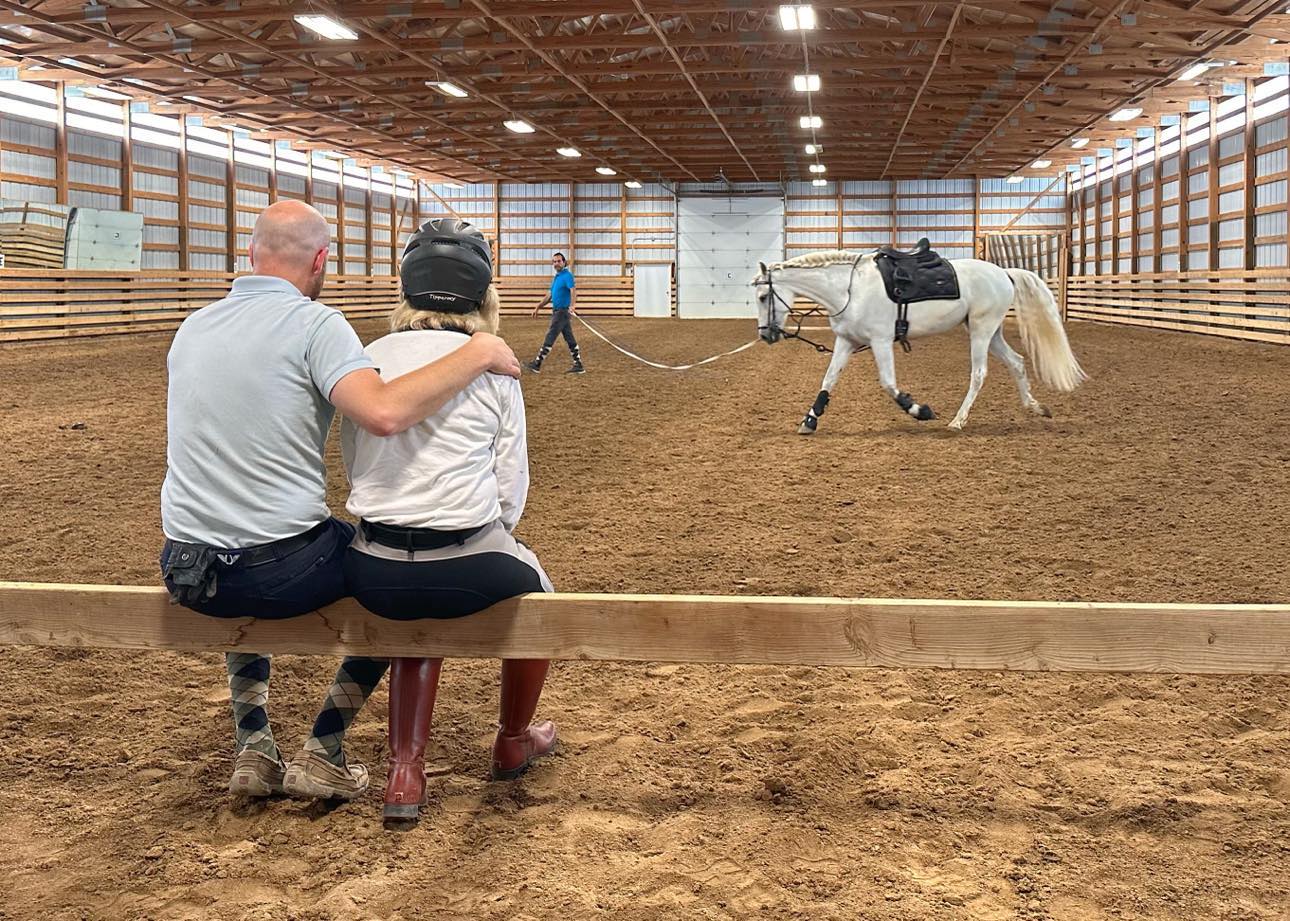
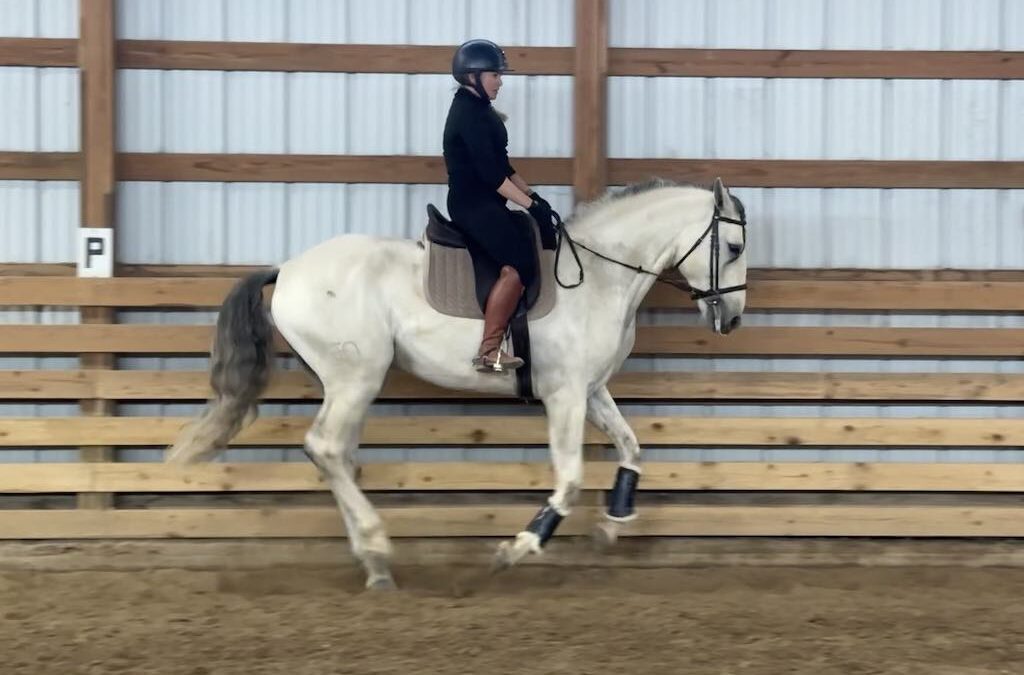
by Carrie Harrison
Ride with the Hands of a Lady, the Posture of a Queen, and the Hips of a Dancer: Decoding a Classic Equestrian Saying
This time-honored phrase — “Ride with the hands of a lady, the posture of a queen, and the hips of a dancer†— paints a vivid picture of the ideal rider. At its core, this saying offers a simple yet powerful reminder: great riding is a blend of sensitivity, elegance, and harmony in motion. Let’s explore the deeper meaning behind each part.
Hands of a Lady~
This phrase emphasizes softness, sensitivity, and finesse. A lady’s hands, in the traditional sense, are graceful and refined — and that’s exactly how your hands should be when riding.
What it means in the saddle:
- Light, steady contact that neither pulls nor drops the connection.
- Quiet hands that follow the horse’s natural movement, especially at the walk and canter.
- A supple, elastic feel through the reins that allows for conversation rather than command.
Visualize this: Imagine holding a bird in your hands — tight enough that it doesn’t fly away, but gentle enough not to harm it. That’s how rein contact should feel. You’re offering guidance, not force.
Posture of a Queen~
Queens are poised, confident, and dignified — never slouching, but also not stiff. This part of the saying refers to a rider’s upper body carriage, which should project balance and authority without tension.
What it means in the saddle:
- An upright, aligned spine with open shoulders and a proud chest.
- A seat that is grounded but light, allowing for a strong yet elegant presence.
- Not rigid or overly posed — true posture is active and adaptable, not stuck.
Visualize this: Think of a queen entering a grand hall — she stands tall, yet moves gracefully. That’s the posture you want: engaged, proud, but relaxed enough to follow your horse’s motion fluidly.
Hips of a Dancer
The dancer’s hips move with rhythm, expression, and freedom. This image encourages the rider to absorb and follow the horse’s movement, rather than brace against it.
What it means in the saddle:
- Loose, swinging hips that follow the horse’s back, especially in sitting trot and canter.
- A relaxed pelvis that allows independent seat aids without bracing.
- A body that moves with the horse — not against it.
Visualize this: A rider with stiff hips bounces or blocks the horse’s movement, while a rider with mobile hips flows like a dance partner. The best seat is one that invites the horse to carry you comfortably — it should look effortless.
Putting it All Together
When these three elements come together, you create a picture of harmony and subtle power in the saddle. Your horse can trust your hands, respond to your posture, and move freely under your seat.
It’s not just about looking good — it’s about riding well. Because when you ride with finesse, presence, and fluidity, your horse can give you their best.
Final Thought:
This saying may be cheeky, but its wisdom is timeless. Refined hands, regal posture, and relaxed hips aren’t just for show — they are the foundation of great riding. So next time you get in the saddle, channel your inner lady, queen, and dancer. Your horse will thank you.










